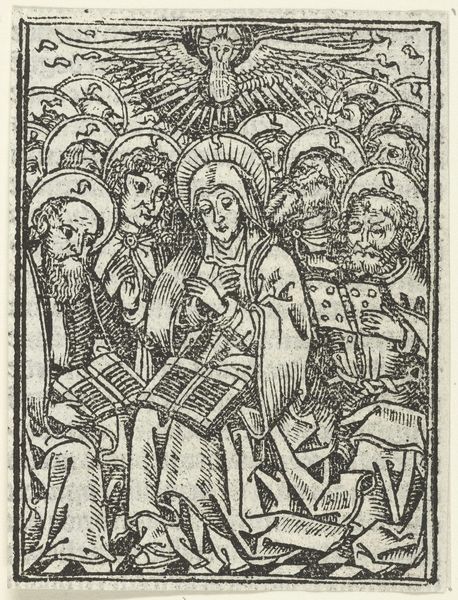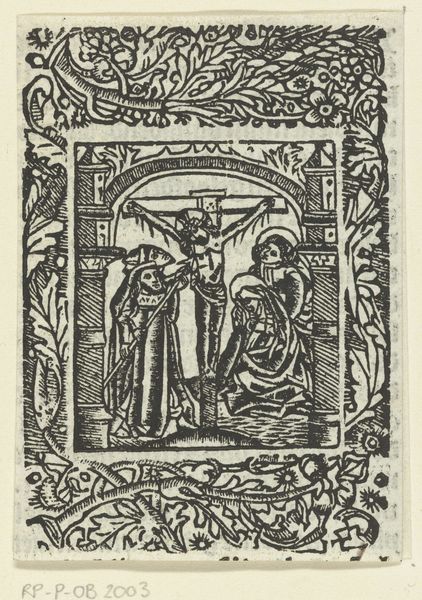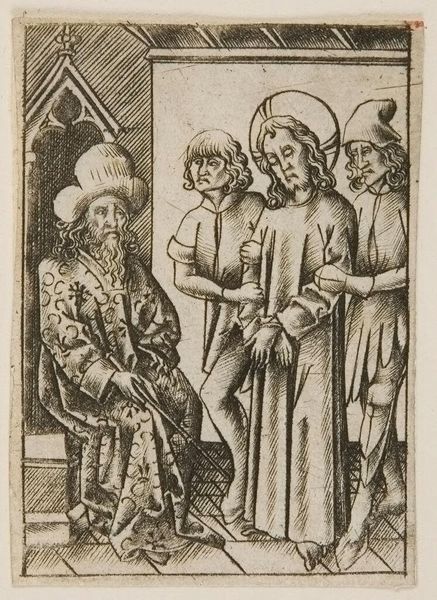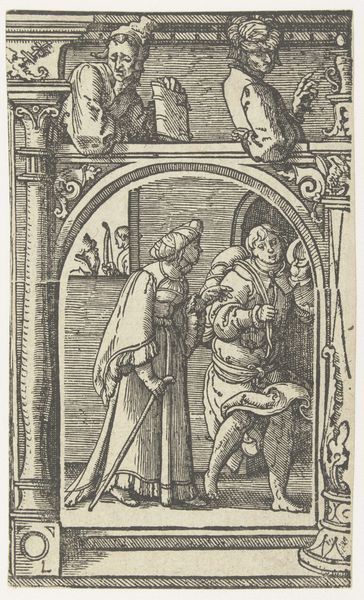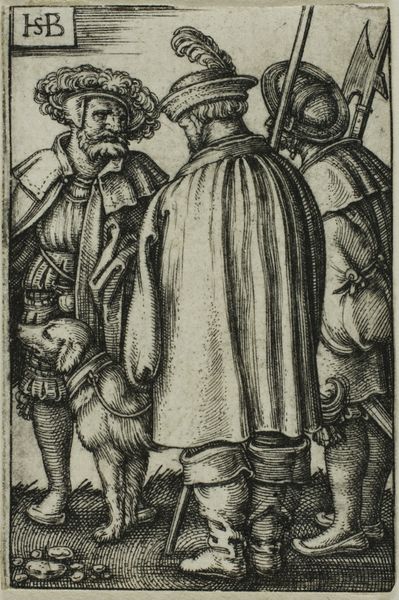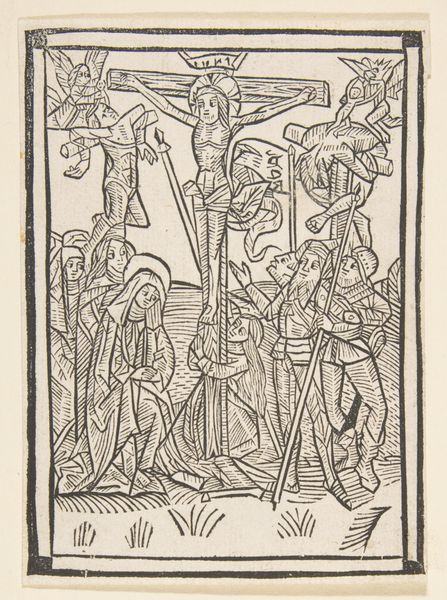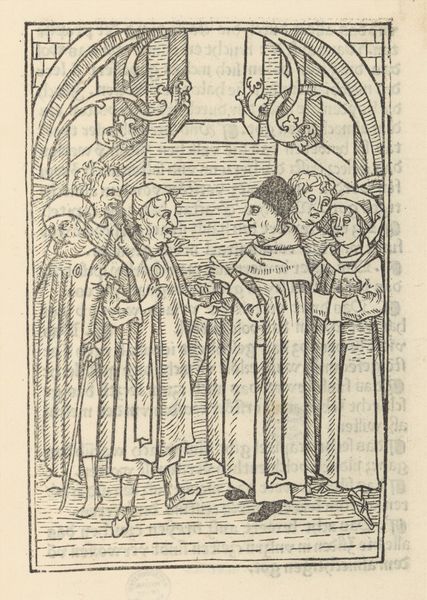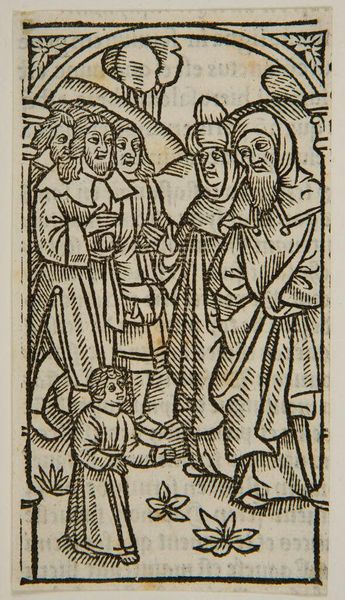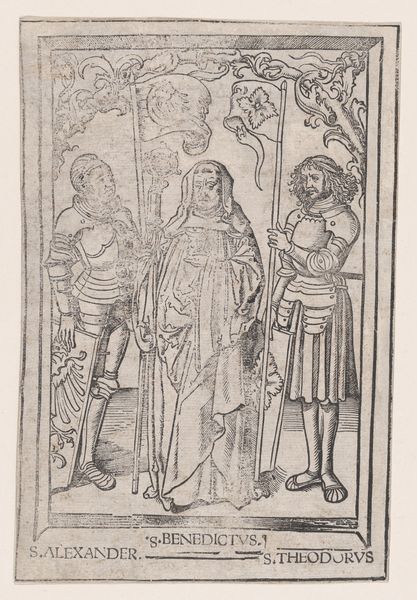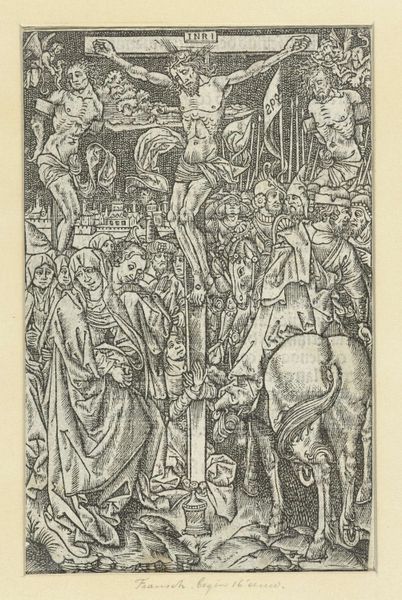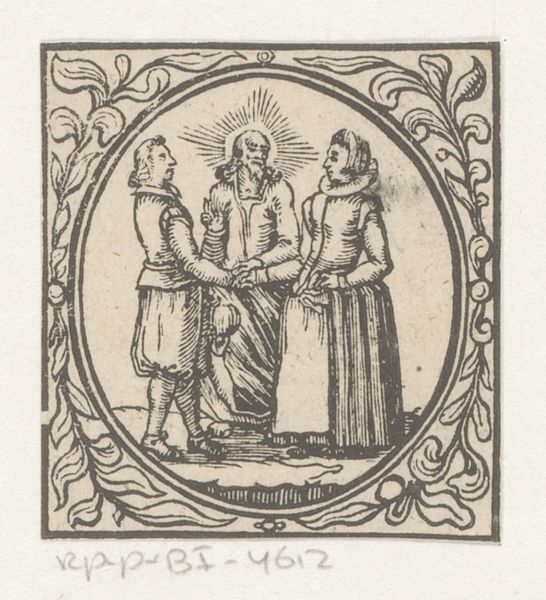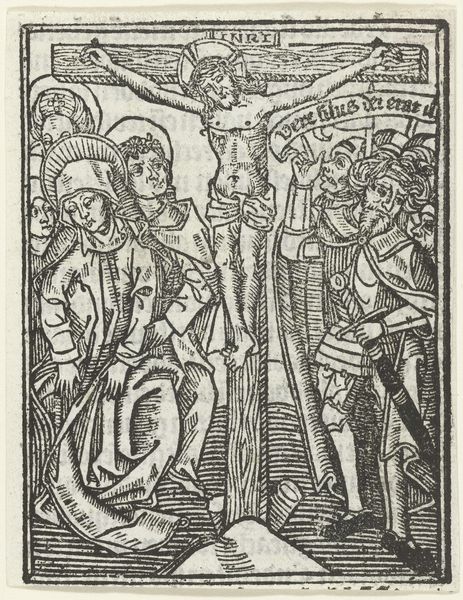
drawing, print, ink, woodblock-print, woodcut, pen, engraving
#
drawing
#
medieval
#
narrative-art
# print
#
pen illustration
#
pen sketch
#
figuration
#
ink line art
#
ink
#
woodblock-print
#
group-portraits
#
woodcut
#
line
#
pen
#
engraving
Dimensions: height 70 mm, width 45 mm
Copyright: Rijks Museum: Open Domain
Curator: This artwork presents four figures in what seems to be an interior setting. It’s called “Vier personen in een interieur,” which translates to “Four people in an interior.” It was created around 1500 by an anonymous artist, executed as a woodcut or engraving, probably a pen illustration on paper. Editor: There's something striking about the directness of this image, even with its simplicity. The way these figures are rendered in just lines creates a very strong sense of form and space, but there's a stiffness, too. The clothes appear somewhat heavy given the material. Curator: Indeed. Consider that this printmaking method involves significant labor. Each line we see represents a deliberate cut into a block, likely wood. Think about the skill involved in carving details into that medium, especially given the time and effort in material procurement and studio maintenance. This wasn’t simply whipped up. Editor: That’s a great point, about the materials and the manual labor involved, and it contextualizes it perfectly. We also need to look at this artwork’s possible sociopolitical meanings in terms of image circulation, especially the cultural importance of line in an art that emphasizes precision. Note how the artist positions figures with hierarchical implications as suggested by one of the four holding a staff of office, their positioning and spatial relationship with the implied power. Curator: I think the spatial arrangement might say more than simply power dynamics. The texture achieved through the line work, and the weight of the dark ink impressed on the paper all speak to the cultural values of the medieval period—of narrative and communal identification through image. Editor: Do you think the artist meant to reflect a specific societal narrative in their time, or simply to meet marketplace needs through image mass production for wide circulation and readership? That said, such artwork plays a great role in disseminating narratives within the broader social context. Curator: I suppose it might be a combination of both. Perhaps that the commission—whether it's directly by the church, an institution, or simply on the marketplace—reflects societal priorities for representation, production of printed images, the culture that consumed this sort of artwork, etc. Editor: I agree. So, while the means of producing this work reveal certain labor-intensive details that indicate a dedication to the craft, we can still think about the image and how its visual dissemination impacted social narratives and political dynamics of the day.
Comments
No comments
Be the first to comment and join the conversation on the ultimate creative platform.
